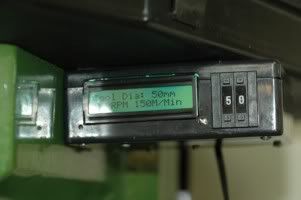rockfish
Titanium
- Joined
- Aug 27, 2006
- Location
- Munith, Michigan
Am I the only guy here that has never learned or used surface speeds ???
I've been a machinist since 1982, and never once was taught anything about it. I was always told that the speeds and feeds outlined in the charts were written by people that didn't really actually run machines. Everything I had ever learned about feeds and speeds was by sight, sound and feel of the cut.
I suppose I would need to know much more about it if I ran a CNC, but I've never had a problem judging what speeds and feeds to use on any given part, and I've never been told I'm going too fast or too slow.
I've been a machinist since 1982, and never once was taught anything about it. I was always told that the speeds and feeds outlined in the charts were written by people that didn't really actually run machines. Everything I had ever learned about feeds and speeds was by sight, sound and feel of the cut.
I suppose I would need to know much more about it if I ran a CNC, but I've never had a problem judging what speeds and feeds to use on any given part, and I've never been told I'm going too fast or too slow.


